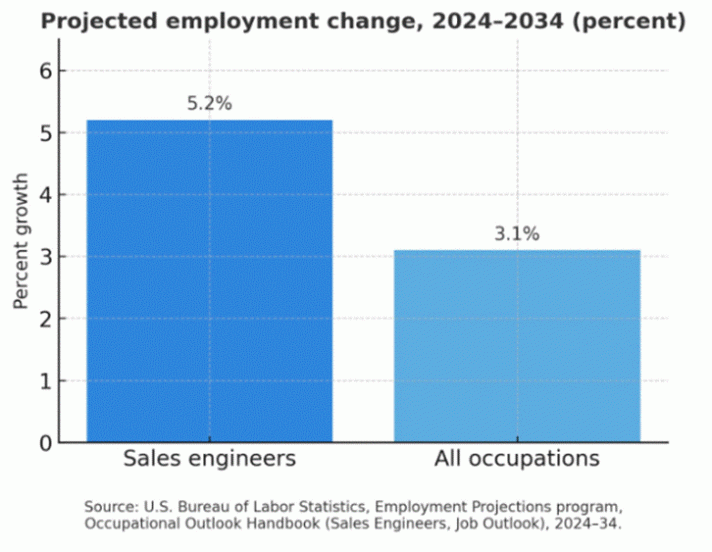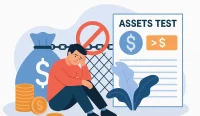Sales engineers are technical sales professionals who connect complex products with real customer needs. In the United States, the role sits at the center of go to market teams in software, cloud, cybersecurity, and advanced manufacturing. Recent labor and industry data show steady demand and strong pay, and the field is maturing as formal communities and shared standards take shape. This article explains the role in plain language, why it is gaining importance in U.S. B2B markets, and how the profession is organizing around shared expectations of excellence.
What sales engineers actually do
Sales engineers sit at the intersection of engineering and the customer. They lead discovery to clarify requirements, design solution approaches, build demos and proofs of concept, answer technical due diligence, map integrations, and quantify business value. During evaluations they de risk decisions by validating feasibility and fit, surfacing constraints, and aligning stakeholders. The best are trusted advisors who translate complexity into clear options for buyers and builders, blending deep technical skill with consultative problem solving.
Why SE demand is growing
Demand for sales engineers is being driven by rising product complexity, the shift to consultative selling, longer multi‑stakeholder buying journeys, and the need to align engineering choices with revenue outcomes. As products and services become more technologically sophisticated, companies rely on SEs to translate capabilities into verified customer value and to de‑risk high‑consequence decisions. The U.S. Bureau of Labor Statistics notes that demand is expected to be strong for SEs selling computer software and hardware, with growth tied to computer systems design and related services.
U.S. job outlook and pay
According to the Occupational Outlook Handbook, there were about 56,800 sales engineer jobs in 2024, with employment projected to grow 5.2% from 2024 to 2034, faster than the average for all occupations. The median annual wage was $121,520 in May 2024. For context, the projected growth rate for all occupations over the same period is 3.1%.

Where SEs work and typical pathways
Sales engineers work across software and cloud services, advanced manufacturing, and wholesale trade. The largest U.S. employer industries include merchant wholesalers, durable goods (21%), computer systems design and related services (20%), manufacturing (18%), wholesale trade agents and brokers (6%), and software publishers (5%). Typical entry routes include a bachelor’s degree in engineering or a related field, plus experience in sales or technical roles. Many SEs transition from adjacent roles such as software developer or computer systems analyst, especially when selling software or integrated solutions.
Signs of professional maturity
Another marker of the role’s rise is the appearance of formal institutions that organize the community and set shared expectations.
In 2020, sales engineers formed their own association. The North American Association of Sales Engineers (NAASE) was established to serve practitioners across North America by providing a professional home for the role. Its stated purpose is to connect sales engineers, support knowledge sharing about pre‑sales practice, and increase visibility of the profession. Activities include a professional community, publications and events, optional credentialing, and recognition of excellence. This gives the field a place to gather, compare approaches, and describe what good looks like in a consistent way.
NAASE’s programs include networking and member forums, informational resources, and the Certified Sales Engineer (CSE) credential for practitioners who want a skills validation pathway. The association also runs public recognition initiatives, including an annual Sales Engineer of the Year program, which surfaces examples of effective practice for peers and employers. Associations like this tend to emerge as a field matures. They help with informal standard setting, create peer recognition mechanisms, and codify knowledge so that the work is easier to understand for hiring managers, customers, and newcomers to the role.
Competitions and awards
Industry competitions provide a clear framework for recognizing excellence in this role. These programs typically evaluate nominees on measurable business impact, technical depth, quality of craft, and contributions to the professional community. Public recognition often includes a published profile or case study, a digital certificate or badge, and opportunities to share methods with peers in a talk or webinar. NAASE runs annual contest for sales engineers since 2021. By highlighting real work and transparent criteria, awards like these help the field articulate what strong performance looks like, provide employers and customers with a common reference point, and encourage practitioners to document outcomes and share repeatable practices.
“Elevate the standards, visibility, and professional growth of technical sales professionals.”
— Diana Cervantes, CSE, President, North American Association of Sales Engineers
Skills emphasis
Core competencies for sales engineers cluster around two domains. The technical side includes domain knowledge, integration literacy, and problem solving. The consultative side includes discovery, communication, and collaboration, which show up in O*NET’s top “importance” skills for the occupation: speaking, persuasion, active listening, critical thinking, reading comprehension, social perceptiveness, and negotiation. Together these reflect the role’s blend of engineering credibility with buyer guidance

Implications for job seekers and employers
Awareness of the role is increasing across U.S. industries that sell complex products and services. Job descriptions are becoming more consistent, and titles such as sales engineer and solutions engineer appear more frequently in software, cloud, cybersecurity, and advanced manufacturing. Compensation levels remain well above the national median, and employment growth is projected to outpace the average for all occupations. In go-to-market teams, sales engineers are central to winning complex deals because they validate feasibility, reduce risk, and align technical choices with business outcomes. Their work typically spans earlier stages of the buying cycle and involves close coordination with product, delivery, and customer success.
Concluding words
Sales engineering is gaining prominence in the United States. Rising product complexity, consultative buying, and multi-stakeholder decision-making are elevating the need for a role that blends technical credibility with clear communication of value. The growth in demand is matched by the appearance of professional structures that help define the work. The emergence of bodies such as the North American Association of Sales Engineers, along with broader use of credentials and industry awards, signals a field that is organizing around shared standards and recognition. Together, these trends describe a profession moving from niche to an established part of modern B2B commerce.




